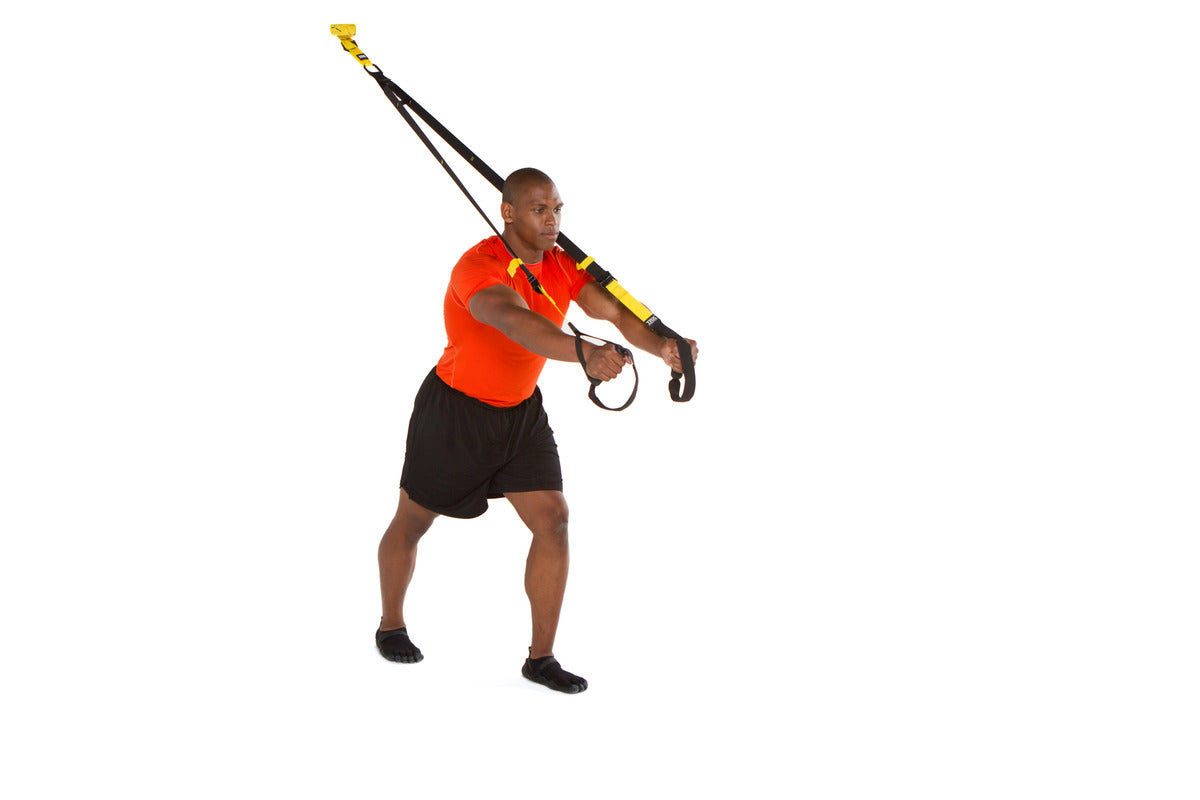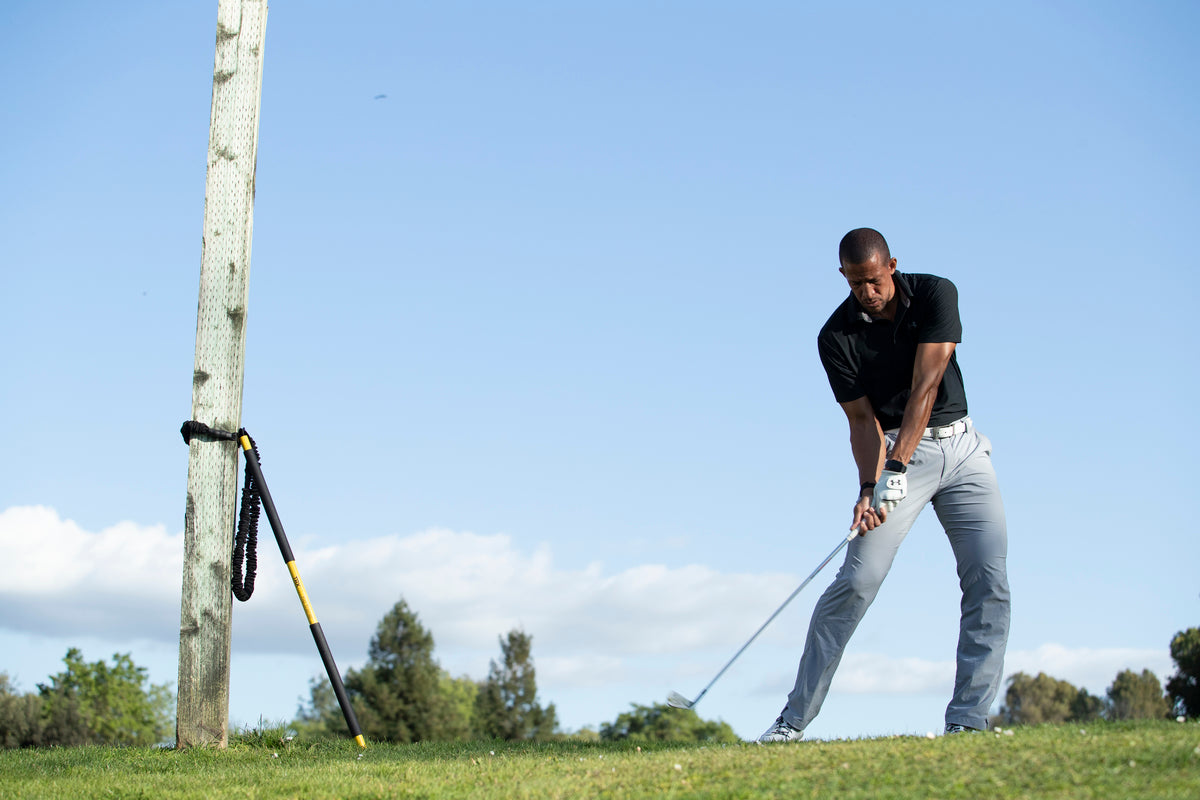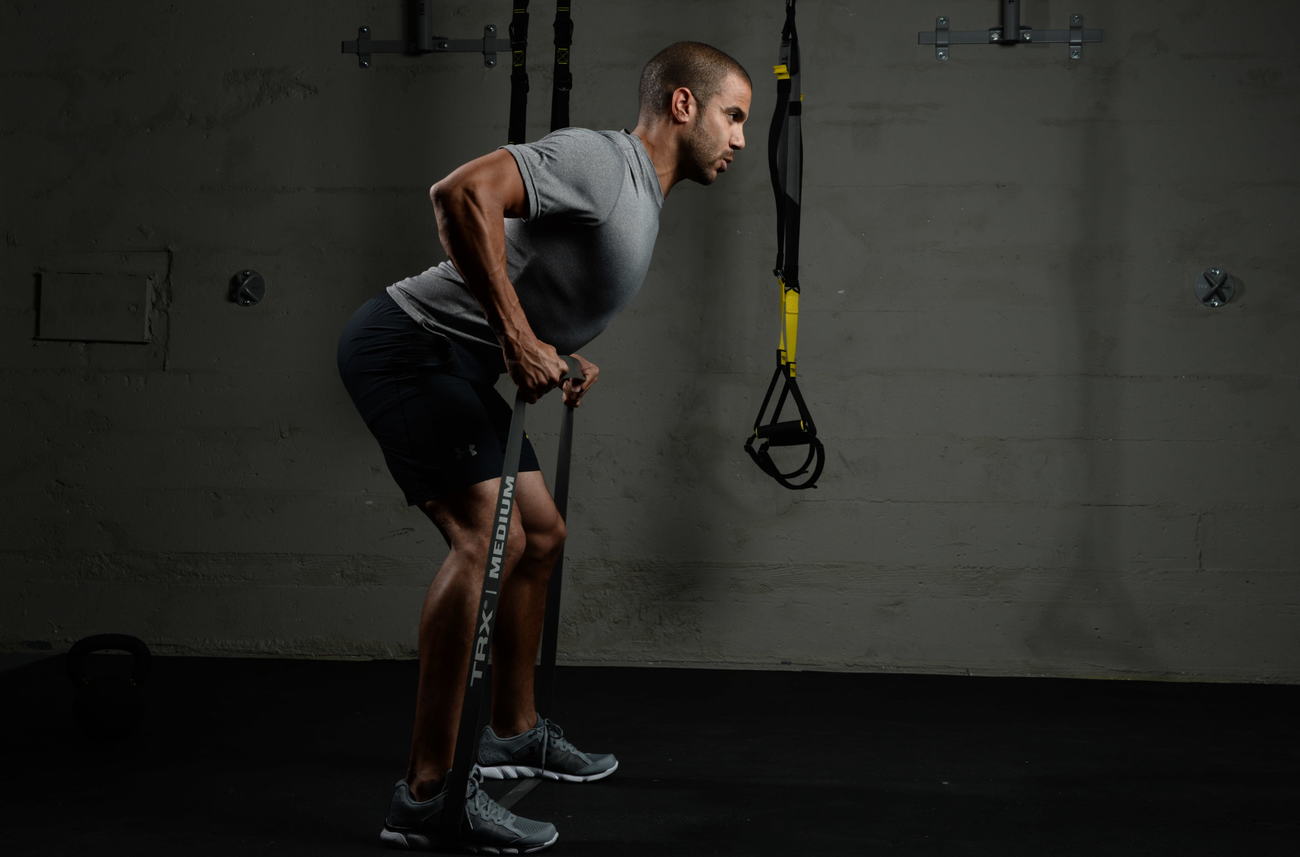The TRX Chest Fly exercise is akin to a standing cable fly, a supine dumbbell chest fly, or a pec deck fly. It targets the chest muscles (pectoralis major, pectoralis minor) directly and the upper arms indirectly (deltoids, biceps and triceps) which act as isometric stabilizers. Unlike compound exercises like the TRX Push-Up that engage multiple muscle groups, the TRX Chest Fly isolates the chest muscles, allowing for increased muscular strength and endurance.
Steps on How to Do a TRX Chest Fly
To perform this exercise effectively, you will need to adjust your straps to full length and your body angle to a more vertical position rather than horizontal. Both will create a more challenging workout for the muscles of the chest. This adjustment emphasizes the contraction and extension of the chest muscles, enhancing their strength and definition over time.
- Start standing, facing away from your anchor. The straps run over and slightly above your shoulders to ensure that they do not rub against your skin.
- Arms are shoulder-width apart and your hands are on the handles. Your arms are slightly bent and in front of the chest with your palms facing towards the midline.
- Position your feet firmly on the floor - a wider stance will allow for a greater basis of support than a more narrow stance. Adjust the distance between your feet and the anchor point to modify the difficulty level. Having your feet closer to the anchor point makes the exercise more challenging as it increases the angle of your body relative to the floor.
- Engage your core, glutes, and shoulders to maintain a straight-line plank position. Maintain a stable plank position throughout the movement.
- To initiate the movement, while keeping the shape of the arm and the slight bend in the elbow, open both arms out to the side in a lateral arc motion.
- Once you feel a stretch in your chest muscles or when your arms reach shoulder level, reverse the motion by bringing your arms back together toward the starting position.
- Repeat this sequence of movements to complete the exercise set.
Important Note: Chest Flys are harder than Chest Presses on the TRX, because your arms move beyond your body's center of gravity. Mastering the TRX Chest Press before working with Chest Flys is important to ensure proper strength in the shoulders and core.
Ways for Advancing the Exercise
Advancing the difficulty of TRX exercises can be achieved by adjusting the angle of your body (your vector) from a vertical position to a more horizontal position. To make a more challenging/deeper vector, move your feet closer to the TRX anchor. The deeper the vector, the more strength and stability that is required to maintain proper form. Additionally, incorporating tempo variations and adding isometric pauses during the exercise can further intensify the workout and engage different muscle groups effectively. These progressive techniques not only make your TRX workouts more challenging but also contribute to improved muscle strength, endurance, control, and overall fitness.
Benefits of TRX Chest Fly
The TRX suspension trainer offers a range of exercises that specifically target your chest muscles along with other upper body muscles. Its versatility allows you to perform a variety of movements that engage each muscle group, making it a valuable addition to your workout routine.
One of the key benefits of the TRX is its portability and lightweight design. You can easily set it up at home, in a park, or even take it with you while traveling. This convenience makes it accessible for anyone looking to incorporate effective upper body workouts into their lifestyle, whether at home or outdoors.
Try the TRX Chest Fly Today
If your gym provides TRX equipment, take advantage of the opportunity to explore new exercises and challenge your muscles in different ways. However, if you prefer the convenience of working out at home or want the flexibility to exercise outdoors, investing in your own TRX suspension trainer can be a wise decision. It allows you to tailor your workouts according to your preferences and schedule, ensuring consistent progress towards your fitness goals. The TRX suspension trainer also has an app where follow-along workouts matching all of your strength and cardio needs can be found.



